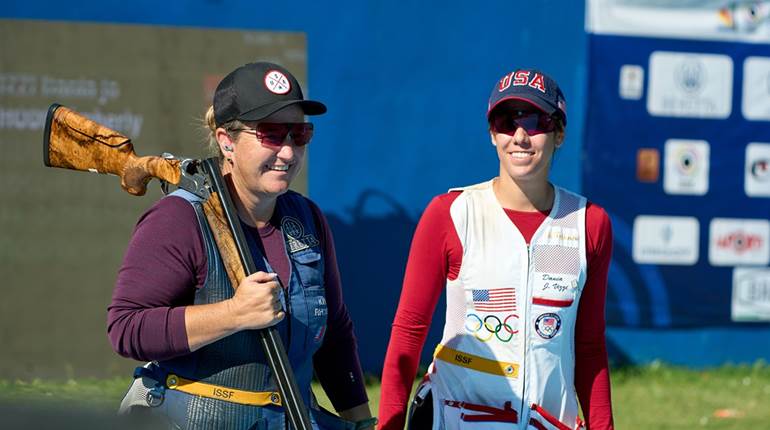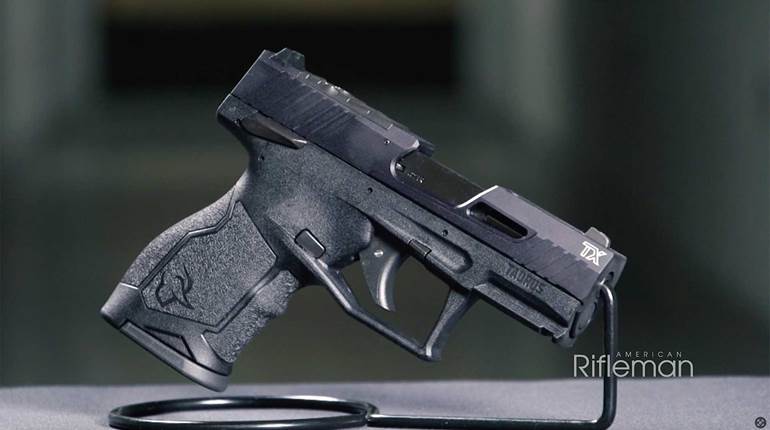Winchester Ammunition is one of the world leaders in shotshell development and production. One of the ways the company stays on top is the effort it puts into developing new loads that are better suited to hunting and target-shooting. Watch our "American Rifleman Television" feature segment above to learn more about how Winchester innovates in the shotshell marketplace.
"One of the incredible things about Winchester is that, every day, we're pushing the limits, trying to innovate and find new and better ways to do things.," said Nathan Robinson, marketing manager, Winchester Ammunition. "Winchester's been such an integral part of the culture of America, and we're doing our part as stewards of that brand to try to continue that."

One of the standout loads in Winchester's lineup is its AA target load, which are a mainstay in the world of trap and sporting clays shooting. They're durable, reliable and best of all, they're affordable. When the AA load debuted, it was a game-changing round for shotgunners, and Winchester has maintained its leadership in the clay-target world due to its success.
"Winchester AAs, they came out back in the '60s and were really a revolutionary shell at the time," said Jimmy Wilson, product manager, Winchester Ammunition. "They used a one-piece plastic wad. They had a plastic hull that was extremely strong. It was made of polymers that were high-strength polymers and could take many, many reloads. The secret to the AAs, though that really made them a performer was the hard shot."

The shot Winchester loads into its AA shotshells is lead alloyed with about 6 percent antimony. Pure lead is soft enough to deform when fired, causing errant pellets to stray from the pattern and limit the reach and evenness of the shot pattern. With antimony, the shot remains hard enough to resist deformation, and that ensures consistent, uniform patterning on target. This makes Winchester target shells a favorite of competition shooters around the world, including Olympic shooters.
"So I've been shooting Winchester for many, many years. I started off when I was 10 years old on the advisory board. It's been an incredible journey," said Kim Rhode, Team Winchester shooter and six-time Olympic medalist. "I mean, Winchester literally helped me become who I am today. I just think of the pallets and pallets of ammo that I shot through in my life. I think it's something like 3 or 4 million rounds."
While target loads are a mainstay of Winchester's ammunition lineup, the company makes a range of shotshells designed for a variety of pursuits, and each load has its own components with different characteristics.
"So for a target load, for instance, we have a primer that burns cleaner than say, a field load would," Wilson said. "And that's a great feature to have in a target load because, oftentimes, those are gonna be reloaded. So it keeps the holes cleaner when the reloader goes to use 'em."

Additionally, Winchester also develops different propellants for different loads. Target loads, for instance, will have a heavier payload being delivered at a higher velocity than some field loads. Winchester formulates its powder to ensure that those performance characteristics are achieved. New loads from the company, like its AA Diamond Grade, have hardened shot with 8 percent antimony, and there are copper-plated versions of this shot to achieve tighter, harder-hitting patterns for guaranteed clay breaks.
"We can't go out and create a new 11 gauge and 11.5 gauge. This won't work," said Stephen Meyer, manager, new product development engineering, Winchester Ammunition. "So we have to really rely on what components we have in there, whether it's the shot material, whether we're working with the propellant companies to come up with a new propellant that has unique characteristics that allow us to get more performance, to load different wad systems that affect the pattern performance."

One of the ways Winchester is improving its components is by using bismuth in its waterfowl shot. Bismuth is a brittle metal, so it's alloyed with tin to make it more durable. Winchester also further cushioned the load by developing a new buffer that prevents the pellets from fracturing when the load is fired. This ensures the pellets travel downrange consistently and produce a tight pattern at farther distances.
The improvement continues in other areas, too. Winchester's turkey-hunting loads have been optimized to produce tighter, harder-hitting shot patterns at greater distances than were ever thought possible. Now, taking down turkeys at distances up to 60 or 70 yards is possible with loads like Winchester's Long Beard XR.

"One of the more interesting things about Winchester is the talent level that goes across a brand like this. So it's manufacturing, it's engineering, it's sales, it's marketing, it's product development, and it takes a lot for all of that to work together. To, you know, build your next two, three, four or five years worth of products and branding and really continue a legacy that's been around for over 150 years," said Jason Gilbertson, director of marketing, Winchester Ammunition. "I think, again, when it comes to innovation and the talent that this brand has, the future is bright, for sure."
To watch complete segments of past episodes of American Rifleman TV, go to americanrifleman.org/artv. For all-new episodes of ARTV, tune in Wednesday nights to Outdoor Channel 8:30 p.m. and 11:30 p.m. EST.

























